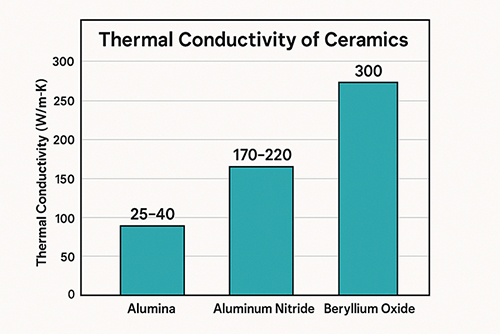An Overview on CVD Coated Silicon Carbide
How Silicon Carbide is Discovered?
Ceramics consist of a host of different materials with special properties. Silicon Carbide (SiC) is one such material which is also known as carborundum or moissanite. SiC was accidentally discovered by Edward G. Acheson, an assistant to Thomas Edison, about 1890, when he was running an experiment on the synthesis of diamonds. Acheson thought the new material was a compound of carbon and alumina, present in the clay, leading him to name it carborundum, a name that is still being used on some occasions.
How to Produce Silicon Carbide?
SiC occurs naturally in meteorites, though very rarely and in very small amounts. Being the discoverer of SiC, Acheson was the first to synthesize SiC by passing an electric current through a mixture of clay and carbon. Nowadays, SiC is still produced via a solid-state reaction between sand (silicon dioxide) and petroleum coke at very high temperatures in an electric arc furnace. A purer SiC product is produced with different advanced manufacturing processes. SiC, as a technical ceramic, is produced in two main ways. Reaction bonded SiC, also known as siliconized silicon carbide or SiSiC, is made by infiltrating compacts made of mixtures of SiC and C with liquid Si. The silicon reacts with the carbon and forms SiC. The reaction product bonds the SiC particles. Sintered SiC is produced from pure SiC powder with non-oxide sintering aids. Conventional ceramic forming processes are still used, and the material is sintered in an inert atmosphere at temperatures of 2000°C or higher. Single crystal SiC is produced for semiconductor application.
![]()
Until recently, the only commercially available polycrystalline silicon carbide has been sintered or reaction bonded hexagonal alpha silicon carbide. Design engineers have had to contend with the fact that the traditional powder consolidation process produces two-phase materials, i.e., some reaction bonded SiC contains as much as 40% free silicon. The "impurity" materials such as free silicon act to compromise the true performance of the SiC. Therefore, another material, CVD coated SiC, is gradually expanding its application.
What is CVD Coated SiC?
Chemical vapor deposition (CVD) is a vacuum deposition method. CVD coated SiC is an excellent reflective optics material, exhibiting superior polishability with low scatter, exceptional thermal and cryogenic stability and high resistance to atomic oxygen and electron beam degradation. CVD coated SiC materials are used as substrates for fabricating mirrors for surveillance, high energy lasers, laser radar systems, synchronotron x-ray, VUV telescopes, large astronomical telescopes and weather satellites. CVD coated SiC lightweight mirrors can be produced either by conventional fabrication, near-net-shape fabrication and precision machining. CVD coated SiC is a unique free-standing, monolithic material with superior characteristics in terms of purity (>99.9%), homogeneity, density (99.9% dense), chemical and oxidation resistance, cleanability, polishability and thermal and dimensional stability. More than a coating, solid, cubic (beta) silicon carbide clearly offers performance advantages over other SiC material produced by traditional processes for applications including semiconductor processing equipment, optics, wear parts and heat sinks for electronic packaging. Because this material has a cubic beta structure, it also offers isotropic characteristics. Hundreds of 6 tests conducted over the past several years confirm the material's homogeneity - not only within a production run, but also from batch to batch.
Conclusion
Thank you for reading our article and we hope it can help you to have a better understanding of CVD coated SiC. For more information, please visit https://www.preciseceramic.com/.
{{item.content}}
LEVE A REPLY
{{item.children[0].content}}
{{item.content}}
LEAVE A REPLY
SUBSCRIBE OUR NEWSLETTER
- Boron Nitride in Cosmetics: Enhancing Performance and Sensory Appeal
- Maximize MOCVD Yield and Purity with Hexagonal Boron Nitride Setters
- What Are the Advantages and Uses of Boron Nitride Ceramic Sheet?
- The Compression Annealing Advantage for Pyrolytic Boron Nitride
- Beyond Insulation: The Surprising Spectrum of Ceramic Thermal Conductivity











